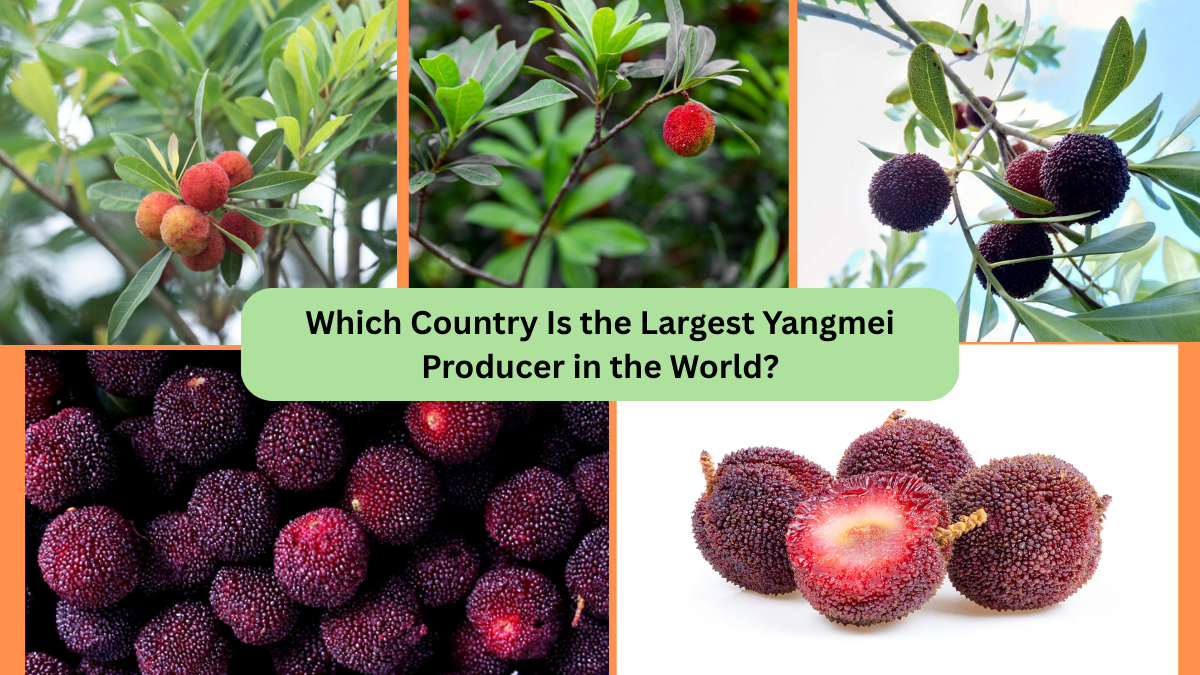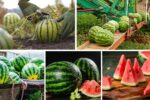With its deep‑red, bumpy skin and sweet‑tart flavor akin to a mix of strawberry, cranberry, and pomegranate, yangmei—also known as Chinese bayberry, red bayberry, yumberry, or waxberry—is one of East Asia’s most beloved seasonal fruits. Though it has yet to conquer supermarket aisles worldwide, yangmei is a staple of festivals, home gardens, and culinary traditions across China. But when it comes to sheer production, China dominates the global scene—accounting for roughly 90% of the world’s harvest.
What Is Yangmei?

Yangmei (Myrica rubra) is a subtropical tree native primarily to south-central and southeast China, with historical cultivation dating back over 2,000 years, possibly since the Han dynasty jiangsu.chinadaily.com.cn+11en.wikipedia.org+11edulisdesigns.com+11. Belonging to the Myricaceae family, its fruit grows on successively flowering branches and has around a 3–5 cm diameter. Each fruit has a single woody seed surrounded by juicy red flesh that delivers a unique sweet‑sour punch .
China: The Global Yangmei Capital
Production Scale
- In 2016, China produced 832,680 metric tonnes of yangmei, up from 745,600 t in 2012 chinafoodingredients.com.
- That surge equates to nearly 823,500 acres (~333,500 ha) under cultivation—twice the size of U.S. apple orchards .
- Over 90% of global yangmei comes from China, with minimal commercial production in Japan, Vietnam, India, and Thailand en.wikipedia.org+2chinafoodingredients.com+2kunming.cn+2.
Key Growing Regions
Yangmei cultivation is concentrated south of the Yangtze River, across provinces such as:
- Zhejiang—the biggest yangmei-producing province (618,400 t in 2019) en.wikipedia.orgchinafoodingredients.com.
- Fujian, Jiangsu, Guangdong, Guangxi, Hunan, Yunnan
- Special GI areas: Fumin in Yunnan, Dafu in Jiangsu, and Fugong in Fujian—each featuring local varieties and annual festivals jiangsu.chinadaily.com.cn+5kunming.cn+5en.wikipedia.org+5tasteallchina.com+1tasteallchina.com+1.
Cultural & Culinary Significance
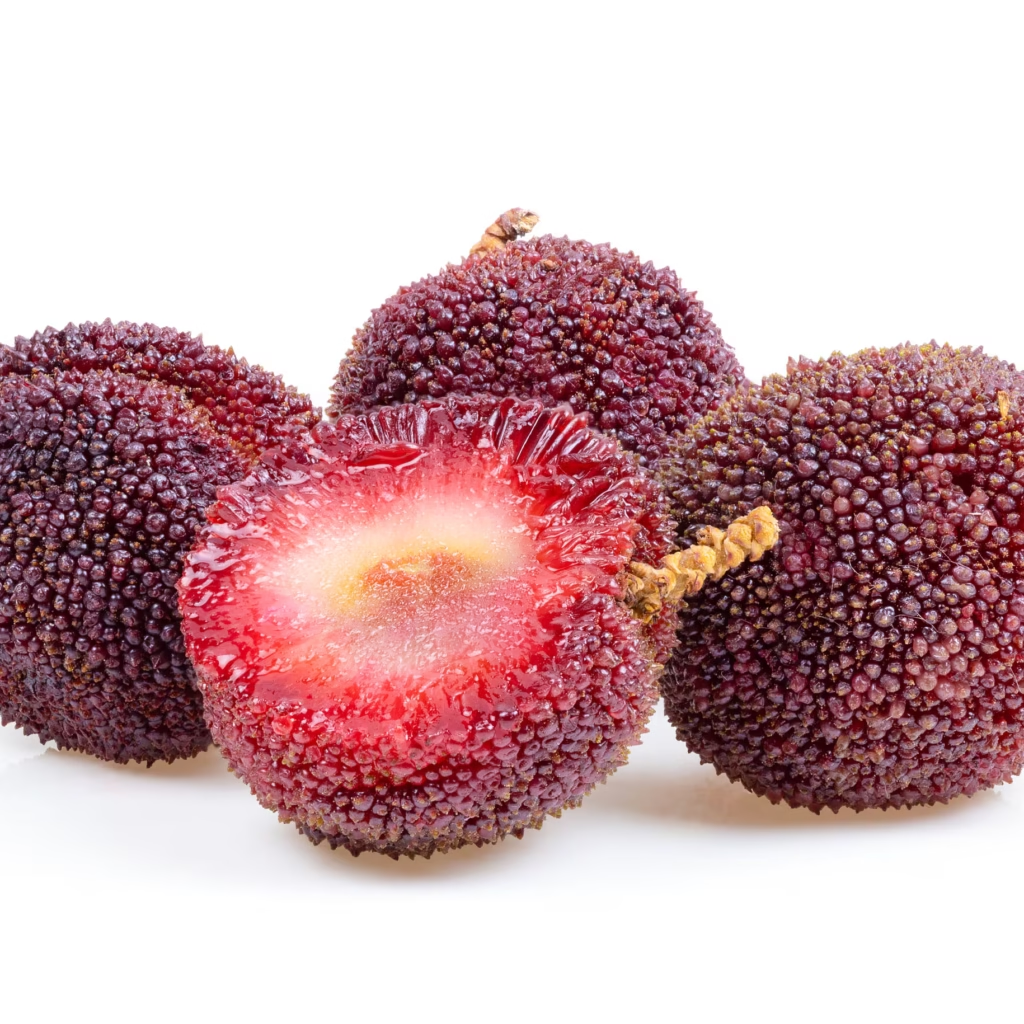
Traditional Uses
Yangmei is more than just juice:
- Eaten raw at peak ripeness—often soaked to remove residual wax or insects chinafoodingredients.com+4italianberry.it+4tasteallchina.com+4.
- Used in liquors: soaked in baijiu or wine.
- Featured in juices, jams, syrups, desserts like ice cream and roasted preparations tasteallchina.com+3en.wikipedia.org+3jiangsu.chinadaily.com.cn+3.
- Employed medicinally: traditional remedies use the bark, roots, and fruit to aid digestion, relieve summer ailments like diarrhea, and reduce swelling subsites.chinadaily.com.cn+3tasteallchina.com+3jiangsu.chinadaily.com.cn+3.
Festivals & Agritourism
Yangmei season (May–July) sparks festivals across China:
- The Fumin Yangmei Festival in Yunnan draws thousands to pick and share the fruits kunming.cn+1tasteallchina.com+1.
- Dafu in Wuxi, known as “yangmei hometown,” hosts flower-and-fruit fairs and attracts tourists with juicy bayberries edulisdesigns.com+3regional.chinadaily.com.cn+3jiangsu.chinadaily.com.cn+3.
- Fugong in Fujian is renowned for sweet, large-fruited yangmei and holds protected GI status reddit.com+15tasteallchina.com+15regional.chinadaily.com.cn+15.
Why China Leads Yangmei Production
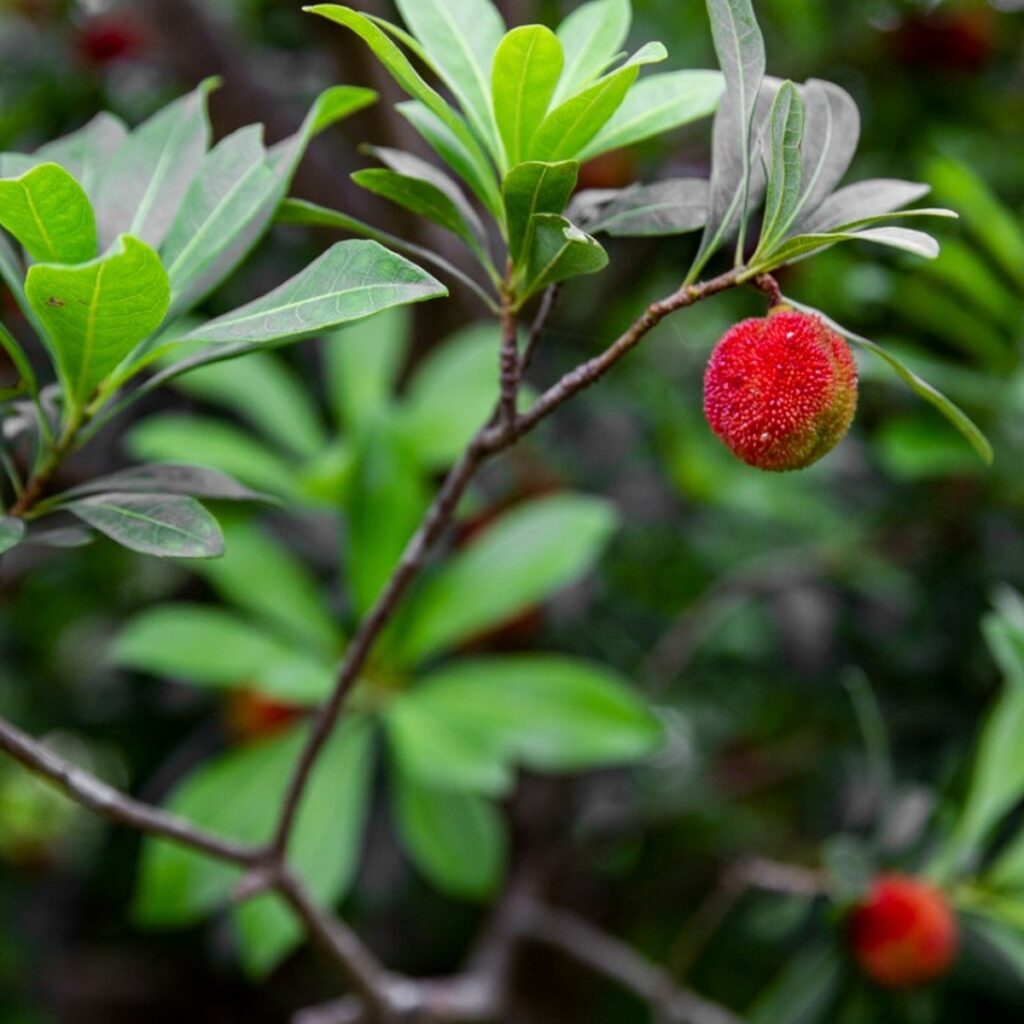
1. Deep cultural roots & favorable climate
South-central China offers warm, humid summers and frequent rainfall—ideal for yangmei. The crop’s long history means centuries of perfected cultivation techniques .
2. Genetic diversity & modern breeding
China cultivates nearly 100 yangmei cultivars, including flagship types like Biqi, Dongkui, Zaoqimi, and Wanqimi, bred for sweetness, juiciness, and yield kunming.cn.
3. Infrastructure & commercialization
China has a robust supply chain—handling scale issues during harvest, packaging, transport, and cold storage—enabling exports to domestic markets across Shanghai, Beijing, and beyond .
4. Agritourism & cultural promotion
By leveraging festivals, GI labels, and local pride, China has branded yangmei as a seasonal specialty fruit with health and cultural value .
Yangmei Around the World
- Japan, India, Thailand, Vietnam: grow yangmei mainly in home or specialty gardens.
- USA (California): private growers like Calmei, Inc., cultivate select cultivars for local niche markets; their “Purple Pearl” and “Eastern Giant” varieties retail for up to $50–70/lb calmei-yangmei.com+1goairmart.com+1.
- Australia, Europe: small-scale production with limited distribution—none rivaling China’s scope .
Health Benefits & Nutritional Profile
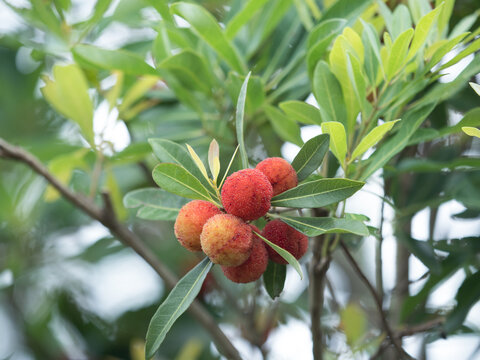
Yangmei is more than a seasonal treat:
- Loaded with vitamin C, anthocyanins, and flavonols, offering antioxidant and anti-inflammatory properties calmei-yangmei.com.
- Traditional extracts thought to aid gut health and metabolism—“detoxifying” effects are celebrated locally .
These health qualities position yangmei well in the rising global trend for superfruits.
Challenges & Future Opportunities
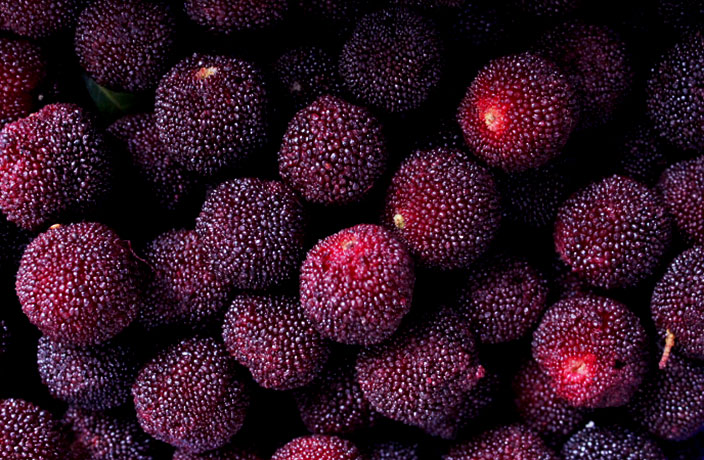
Challenges:
- Shelf life: Very perishable and prone to bruising—a barrier to long-distance shipping italianberry.it.
- Exports: Limited presence overseas—mainly available as juices, powders, or syrups.
- Consumer awareness: Yangmei remains more of a cultural niche than a mass-market fruit globally.
Opportunities:
- Value-added products: Yangmei juice, blends, dried berries, and skin care lines (leveraging antioxidant benefits) can extend shelf life and reach .
- Eco-tourism & branding: Festivals and GI designations can draw global attention and culinary tourism.
- Cultivar export: Breeding and exporting elite cultivars may seed interest in new markets like North America and Europe.
Final Verdict
So, which country is the largest yangmei producer in the world? The answer: China — by a landslide.
With over 800,000 t annually, more than 90% of global output, deep-rooted cultivation, geographical indicators, and modern agribusiness strategies, China remains the undisputed leader. While countries like Japan, Thailand, and the U.S. experiment with small-scale plantings, and brands like Calmei hint at global potential, it’s China’s yangmei orchards, heritage, and markets that truly define the fruit’s story.
As superfruit and exotic flavors gain traction worldwide, yangmei may move beyond its regional fame. And when it does—China will be ready with its knowledge, cultivars, and cultural story to take the lead.
